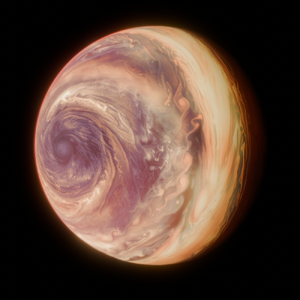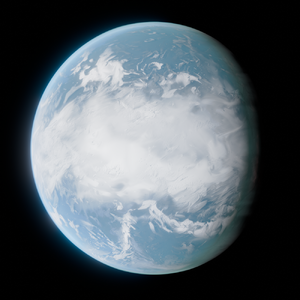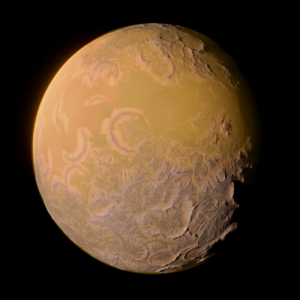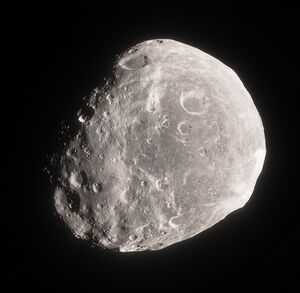Astronomy
Constellations of the Gothan Night Sky
The vast expanse of the night sky has long captivated the human imagination. From the primitive civilizations of yore to today's advanced societies, one consistent practice stands out – the grouping of stars into recognizable patterns, known as constellations. However, this practice isn't merely about observing the sky. The significance of constellations lies in their rich history and their reflection of human culture, beliefs, and myths.
Origins in Antiquity
The partitioning of the starry expanse into specific regions, each marked by a set of stars, is a practice that dates back to ancient times. The origin of both the patterns and names attributed to these constellations is believed to lie in the systems prevalent among primitive civilizations. The ways in which stars were grouped and named provides valuable insights into the meteorological, religious, and mythological beliefs of these early societies.
From Constellations to Asterisms
While the larger star patterns are referred to as constellations, there exists a subset known as asterisms. These are smaller groups of stars that are part of larger constellations. Just like constellations, asterisms, as well as individual stars, have been given names throughout history. Often, these names echo meteorological phenomena or encapsulate the religious and mythological beliefs of the societies that named them.
Alir
Alir, the luminous heart of our cosmic domain, reigns supreme in its fiery splendour. An ever-burning beacon, it casts its radiant embrace across the vast celestial tapestry, bringing warmth, light, and life to the farthest reaches of its dominion. Each day, Alir rises, not just as a star but as an emblem of hope, continuity, and the undying spirit of the cosmos.
Its fiery visage, a cauldron of churning plasma and magnetic storms, paints the sky with hues of gold and crimson, manifesting both the gentleness of dawn and the fury of a solar flare. Alir's power is not just the visible brilliance that meets the eye; its influence stretches far and wide, its gravitational embrace holding planets, moons, and asteroids in a harmonious cosmic ballet.
Yet, for all its blazing might, Alir is also a beacon of life. It is the architect of life on Gotha, the whisper of evening winds on Nemon, and the touch of warmth that fights Roth's icy chill. Its rays penetrate the deepest oceans of Samler and dance upon the stormy face of Numor.
It's said that every flare, every sunspot, tells a tale older than the planets themselves—a chronicle of creation, evolution, and the eternal cycle of birth and rebirth. As Alir continues its aeons-long journey, it remains a testament to the beauty and power of nature, a reminder of our humble place within the grand theatre of the universe.
| Star | Alir |
|---|---|
| Class | G-type Main Sequence Star (G2V) |
| Mass (Earth masses) | 333,000 |
| Radius (km) | 696,340 |
| Rotation Period (hours) | Approximately 609.12 (at the equator) |
| Ocean Data | N/A |
| Orbital Data (Period) | N/A |
| Semi-major Axis (AU) | N/A |
| Eccentricity | N/A |
| Axial tilt | Approximately 7.25° (to the ecliptic) |
| Inclination (°) | N/A |
| Max temperature (°C) | Approximately 15 million (at the core) |
| Average Temperature (°C) | Approximately 5,500 (surface) |
| Min Temperature (°C) | Approximately 4,000 (in sunspots on the surface) |
Alirian Inner System
Numor
Often dubbed as the "Vigilant Eye of Alir," stands sentinel as the innermost celestial body of its system. This tidally locked sub-gas giant boasts an awe-inspiring sun-facing vortex within its gas clouds, granting it the appearance of an enormous, watchful amber eye forever fixed on Tyr. Both observational data and prevailing theories paint a portrait of a planet fraught with peril. Furious, tempestuous winds roar through its atmosphere with such violence that they threaten to obliterate any probe that isn't first consumed by the searing heat of Numor's sunlit side. Conversely, the eternal night of its dark side plunges temperatures well below freezing. This extreme thermal dichotomy suggests the potential for an intricate tapestry of atmospheric reactions, with the planet's distinctive cloud bands possibly serving as testament to its exotic chemistry.
Samler
An enigma of a world, sheathed entirely in a vast, boundless ocean. Beneath its azure depths, the ocean floor is believed to be blanketed by a dense layer of high-pressure ice. This unique ice layer acts as a protective barrier, insulating the warm, pulsating heart of the planet from its rocky foundation. Despite Samler's soaring temperatures, its thick and oppressive atmosphere staunchly prevents its waters from vaporizing into space. While its unforgiving conditions and deep, scalding oceans might initially suggest a barren world, it's pivotal to approach such claims with caution.
Nemon
cloaked in tales of ancient cosmic dance, may have once been tethered to Samler as its steadfast moon. But the gravitational whims of Alir and Tyr severed this bond, propelling Nemon into an independent orbit. Resembling a tamer version of Gotha, this diminutive, low-gravity planet offers warmer climes, punctuated by sparse traces of water vapor. High altitudes might see these vapors condense into fleeting droplets before they are swiftly reclaimed by the heat. Yet, hope flickers in the hearts of many, as the tantalizing prospect of life on Nemon remains a beacon of possibility.
Gotha
our cradle of life, blossoms as a verdant oasis amidst the vastness of space. Its lush landscapes and teeming oceans brim with life, nurturing and sustaining every breath we take.
Roth
stands in stark contrast as a frigid, rocky realm, smaller than Gotha. Its surface is a mosaic of icy sheets and snowdrifts, punctuated occasionally by steam or carbon dioxide geysers that mark sites of geological unrest. The juxtaposition of its pristine white expanse against streaks of earthy brown entices many a curious mind. Deep beneath its cold facade, there might be sanctuaries of liquid water, cradling pockets of life that persist against all odds.

|
|---|
Gotha
Gotha, our thriving blue-green gem, is not just a testament to nature's brilliance amidst the vast theatre of the universe, but also the epicenter of an intricate celestial ballet. Elegantly escorted with every revolution by Hela, a moon enrobed in terracotta, Gotha radiates a deep, ethereal reddish allure. This exquisite dance paints poetic vistas on the Gothan skies, weaving a tapestry of shadows and lights.
Yet, what truly enchants the observer's eye and stands as Gotha's crowning jewel is its majestic ring system. This delicate halo of material gracefully encircles the planet, casting an almost mystical aura. It isn't merely the span of this ring that bewitches, but its diaphanous nature, borne from its sparse density. Under the gleaming embrace of Alir or the golden rays of our sun, this ring refracts and disperses light in captivating arrays, sprinkling dappled shadows and luminescent patterns upon Gotha's canvas.
In the proximity of this ring dances Otin, one of Gotha's minor moons - a tiny asteroid that creates ripples in the ring's composition. Its close proximity and interaction with the ring material creates a visible wave-like distortion, almost as if the universe's finger has skimmed the ring's surface. However, this mesmerizing display is a fleeting one on the cosmic timescale. Predictions suggest that Otin's dance with destiny is finite. In a few tens of millions of years, it may succumb to Gotha's gravitational might, fragmenting and becoming one with the very ring it now dances beside.
Laka, another of Gotha's asteroids, stands in stark contrast to Otin, maintaining a respectful distance in its orbit and serving as a silent guardian in the skies.
Hela, with its russet embrace, and the asteroids Otin and Laka, each with their tales, serve as eternal emblems of Gotha's rich celestial companionship. Meanwhile, the rings, with their perpetual luminance, transform Gotha from merely a cradle of life to a masterpiece of the cosmos's grand design.

Hela
- See also: Exploration of Hela

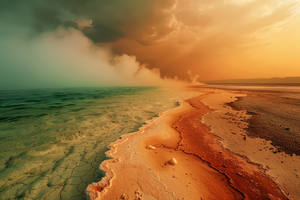
Hela, christened the "Crimson Sentinel" of Gotha's skies, stands as a testament to the fiery and tumultuous nature of celestial bodies. This rocky, volcanic moon exhibits a rich terracotta complexion, an ode to its dominant carbon dioxide atmosphere which scatters light in a manner painting the satellite in deep reddish hues. This unique coloration is punctuated by regions of yellow, a clear indication to the sulphur dioxide present, marking areas of heightened volcanic activity.
From Gotha, Hela appears as a large, dominant orb, its vast terrains easily discernible to the naked eye. During its phases, the moon transitions from a thin reddish crescent to a grand, fully illuminated terracotta disc, mesmerizing the onlookers below. On certain nights, sporadic bright spots break the monotonous reddish canvas, indicative of violent volcanic eruptions spewing molten lava on Hela's surface. These eruptions, occasionally casting a brighter glow, serve as celestial performances for Gothan stargazers.
While its appearance from Gotha might give a sense of warmth and fire, Hela is a world of contrasts. Its average temperature remains low, and the regions untouched by volcanic activity are frigid. Yet, its imposing presence and fiery visage in the sky have made it an object of both admiration and curiosity for generations on Gotha, forever etching it as the radiant, crimson guardian of the night.
| Attribute | Value |
|---|---|
| Class | Rocky Volcanic |
| Mass (Earth masses) | 0.0209 |
| Radius (km) | 2,270 |
| Rotation Period (hours) | 41.30 |
| Ocean Data | N/A |
| Orbital Data | |
| Period (Days) | 43.68 |
| Semi-major Axis (km) | 524,485.00 |
| Eccentricity | 0.05 |
| Axial tilt | 0.00 |
| Inclination (°) | 0.00 |
| Max temperature | 23.30 |
| Average Temperature | 2.44 |
| Min Temperature | -180.00 |
| Atmospheric Pressure (atm) | 0.16 |
| Atmosphere Composition % | |
| CO2 | 83.00 |
| SO2 | 1.50 |
| H2O | 0.25 |
| N2 | 15.00 |
| CO | 0.20 |
| Ar | 0.02 |
| Ne | 0.01 |
| Kr | 0.01 |
| He | 0.01 |
| O2 | 0.00 |
Topography of Hella

The Orkanan Calendar
- Main article: Orkanan Calendar
The Orkanan calendar is a marvel of celestial observance, synchronized meticulously with the phases of Hela, Gotha's dominant moon. Rooted deeply in the traditions and daily life of Gotha's inhabitants, this calendar has evolved as a reliable means to track time.
Structure:
- The calendar follows a month structure based on Hela's lunar phases. In a span of 2 solar years, there are 17 lunar months, translating to approximately 8.5 months in a single year.
- Each month consists of 4 weeks, aligning with the 4 distinct phases of Hela. The weeks are made up of 11 days each, with an exception for one week which has 10 days. This unique 10-day week serves as a reminder of the intricacies of the celestial bodies and their interplay.
- Hence, the length of a solar year in the Orkanan calendar is precisely 365.5 days.
Leap Years:
Given that there is a half-day discrepancy with the solar cycle each year, it accumulates over time. To rectify this and ensure that the lunar calendar remains synchronized with the solar year, the Orkanan calendar introduces a leap year.
Every 2 years, a leap day is added, bringing the total days in that year to 366. This adjustment ensures that the lunar phases, months, and solar year remain in harmony over extended periods.
Tyr - The System's Giant
- Main article: Tyreal Cycle
Tyr, the enigmatic brown dwarf, traverses our skies in an eccentric ballet, its celestial path an age-old tale of duality, woven with threads of both boon and bane. From the surface of Gotha, during the Tyrian Maximum, Tyr stands as a luminous orb, larger and brighter than the most brilliant stars, yet dimmer than our vermillion coloured moon Hela. Despite its dwarf status, its deep molten orange, sometimes leaning toward reddish or magenta hues, lends the sky an ethereal quality, especially during the twilight hours. The dwarf's radiant heat intensifies the hues of sunrises and sunsets, painting the horizon with a palette of colours that have inspired countless Gothan poets and artists.
Every 36 years, as if bound by an ancient cosmic clock, Tyr draws close, casting its subtle but profound influence upon Gotha's delicate climate. During this Tyreal Maximum, Tyr's gravitational pull and subtle radiative effects combine to nudge Gotha's temperatures upward by a seemingly slight 2 degrees. In certain regions, clouds shift, rains become generous, and the land burgeons with life. Crops grow taller, fruits bear sweeter, and for a time, it's as if nature itself celebrates.
However, the dance of the cosmos is one of balance. As some regions revel in abundance, others face the brunt of Tyr's embrace. Rain clouds recede, rivers run thin, and parched lands stretch far and wide. Communities come together, finding ingenious ways to survive and adapt to these testing times.
Conversely, the Tyreal Minimum brings a change in Tyr's luminance. Its brightness diminishes, though it remains a distinctive presence in the sky due to its unique colour and brilliance. As Tyr retreats on its elliptical path, Gotha feels a drop in temperature, again by that crucial 2-degree mark. Areas once stricken by drought find relief in cooler breezes and timely rains. Yet, elsewhere, the cold proves a challenge.
Tyr, in its cosmic journey, serves as a reminder of the delicate balance that governs life. Its cycles, though predictable, challenge the adaptability of Gotha's inhabitants, pushing them to innovate, unite, and cherish the ebb and flow of nature's ever-changing embrace.
| Celestial Body | Tyr |
|---|---|
| Class | Brown Dwarf |
| Mass (Earth masses) | 17,776.00 |
| Radius (km) | 56,473.00 |
| Rotation Period (hours) | 90.20 |
| Ocean Data | N/A |
| Orbital Data (Period) | 36.1 years |
| Semi-major Axis (AU) | 11.10 |
| Eccentricity | 0.35 |
| Axial tilt | 0.00 |
| Inclination (°) | 0.00 |
| Max temperature | 727.00 |
| Average Temperature | 727.00 |
| Min Temperature | 727.00 |
Planets around Tyr
Tyr, identified not as a planet but a brown dwarf, diverges from traditional celestial bodies by having no moons. Instead, it is orbited by five significant planets, known since antiquity for their massive, icy compositions. These planets, characterized by their thick, icy crusts, harbor subsurface oceans beneath their frozen exteriors, suggesting a dynamic, albeit cold, geology. Among these, only two possess atmospheres substantial enough to be noted, with Mol standing out for its particularly dense atmosphere. This dense atmospheric layer on Mol is capable of sustaining cloud formations, hinting at complex weather systems and perhaps even more intricate atmospheric phenomena not commonly found on icy bodies.
In addition to these planets, Tyr commands a vast assembly of minor asteroids within its outer orbits. This collection is primarily composed of rocky bodies, each enveloped in layers of ice, showcasing a blend of materials that reflect both the composition of the brown dwarf's own formation and the varying conditions present in its distant, outer reaches. These asteroids, with their icy coatings, could potentially harbor clues about the early solar system's conditions and the processes that led to their current state.
The presence of such a diverse array of celestial objects around Tyr - from massive, icy planets with subsurface oceans and atmospheres capable of supporting cloud formation, to a vast constellation of icy-layered asteroids - underscores the complexity and diversity of the Tyr companions.
|
|---|
Alirian Outer System
Ves
the ice giant, is a mesmerizing canvas of contrasting beauty. Mottled pastel blue-green lowlands lie nestled amongst pristine icy white highlands and towering plateaus. The distinctive hues of its lowlands are courtesy of various nitrogen compounds, a vibrant testament to the planet's unique atmospheric composition. These vast expanses are frequently interrupted by striking black streaks that run predominantly from the east to the west. These streaks are not mere cosmetic features; they are remnants of Ves's volatile temperament. As the sun kisses Ves's surface, the underlying pressure from its subsurface nitrogen reservoirs builds, resulting in explosive geysers. These eruptions send dark plumes of nitrogen gas skyward, creating the characteristic blowouts that mar its otherwise serene landscape.
Non
The sentinel at the edge of our system, is a titan among planets. Dwarfing its many frozen moons, Non's vast expanse is a deep, enchanting blue, a color so profound it seems to swallow light itself. Streaking across this blue canvas are tempestuous cyan and white bands, the footprints of storms of unimaginable scale and ferocity. These aren't just any storms; they are tempests so powerful they could swallow entire planets. But it's what happens within that's even more captivating. Deep within Non's oppressive atmosphere, it's believed that diamond rains form — a spectacle of glittering crystals that cascade downward. But their descent is short-lived. As these diamonds plummet towards the planet's hotter inner regions, they vaporize, transitioning back into gaseous carbon, in a cyclic dance of creation and dissolution.
|
|---|
